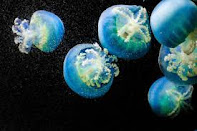Jellyfish are taking over the ocean: why it matters and what it means for the future
Jellyfish are simple but fascinating creatures that have existed for millions of years. They are often thought of as pests or nuisances, but they play an important role in the marine ecosystem. In recent years, the population of jellyfish around the world has increased dramatically, causing concern to both scientists and environmentalists.
Why do jellyfish reproduce?
There are a number of factors that contribute to the growth of the jellyfish population. One of the most important is climate change. The oceans are warming, which creates more favorable conditions for the reproduction of jellyfish. In addition, pollution promotes the growth of algae, which many jellyfish feed on. Finally, overfishing led to fewer jellyfish predators, allowing them to reproduce unchecked.
Consequences of jellyfish population growth
The growth of the jellyfish population has a number of negative consequences. Jellyfish can compete with fish and other marine creatures for food and resources. They can also damage fishing gear and power plants. In addition, jellyfish stings can be painful for humans and even fatal in some cases.
What can we do about it?
There are a number of things we can do to address the problem of jellyfish overpopulation. We can reduce greenhouse gas emissions to slow climate change. We can also reduce pollution, treat wastewater before discharging it into the ocean, and reduce the use of fertilizers and pesticides. Finally, we can support sustainable fishing practices that help preserve jellyfish predator populations.
The future of jellyfish
Jellyfish population growth is likely to continue in the coming years. This means that we will need to find ways to coexist with these creatures and mitigate the negative effects of their growth. Jellyfish are resilient creatures that are likely to thrive in a changing world. However, we can take steps to reduce their impact on the marine ecosystem and ensure a sustainable future for the oceans and the people who depend on them.
Jellyfish population growth is a complex issue with far-reaching consequences. By understanding the causes and consequences of this phenomenon, we can take steps to mitigate its negative impact and ensure a sustainable future for our oceans.




Comments
Post a Comment